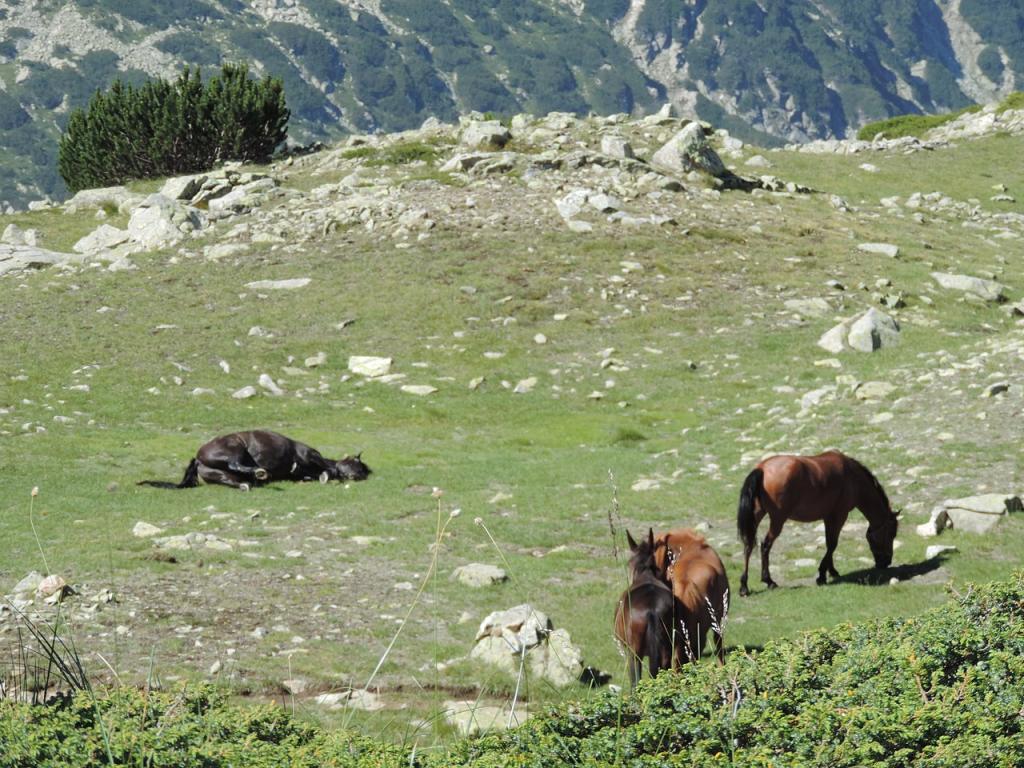
Continent: Europe
Country: Bulgaria
Weight: 275 – 295 kg
Height: 126 – 138 cm
The Karakatchan is an ancient horse breed originating from the Balkans, mainly raised in the northeast of Bulgaria and the western part of Turkey.
It was developed by the nomadic Karakatchan people, known for their pastoral and transhumance traditions.
This rustic pony is adapted to the mountainous terrain of the Balkans, especially in the regions of Choumen, the Rhodopes, Pirin, and Stara Planina mountains. Its selection was mainly natural and conservative, with strong endurance and robustness suited to the harsh conditions of mountain life.
The breed represents a valuable cultural and biological heritage of the Balkan pastoral communities.
The Karakatchan has a high genetic value due to its natural adaptation to harsh mountain conditions. Its rusticity, disease resistance, and ability to maintain populations in a natural environment make it a precious genetic reservoir. The breed can contribute to the preservation of ancient traits and improve modern breeds by enhancing their endurance, robustness, and frugality.
Breeding Area:
The Karakatchan is mainly bred in the mountainous regions of the Balkans, notably:
- Northeast Bulgaria (Choumen region)
The Rhodopes, Pirin, and Stara Planina mountains
- Western Turkey
These areas are characterized by rugged terrain, harsh climates, and traditional transhumance practices.
The Karakatchan has a high genetic value due to its natural adaptation to harsh mountain conditions. Its rusticity, disease resistance, and ability to maintain populations in a natural environment make it a precious genetic reservoir. The breed can contribute to the preservation of ancient traits and improve modern breeds by enhancing their endurance, robustness, and frugality.
The Karakatchan is an ancient breed, descended from the nomadic Karakatchan people who practiced transhumance in the Balkans. Its selection was mostly natural, based on survival, strength, and carrying capacity on difficult terrain.
In the 20th century, the breed suffered a severe decline due to state policies (confiscations, uncontrolled crossbreeding) but now benefits from recognized conservation programs.
The Karakatchan is a rustic, resistant, intelligent, frugal, and docile horse. It is renowned for its ability to survive in harsh conditions. It is cautious on steep trails and has an excellent terrain instinct, making it a reliable partner for mountain work.
The future of the Karakatchan lies in its conservation and promotion as a rustic and versatile mountain horse. Thanks to conservation programs and the development of ecotourism, the breed's population is stabilizing. Its role in the sustainable management of natural spaces and biodiversity preservation could increase its importance in coming years.
The Karakatchan is generally very robust with natural disease resistance. It shows few genetic predispositions to serious health problems. Its rusticity allows it to thrive in extensive systems with minimal veterinary intervention, thanks to strong hooves and great adaptation to cold and rough terrain.